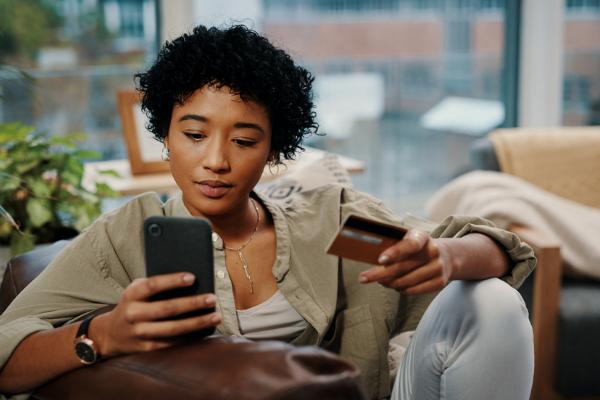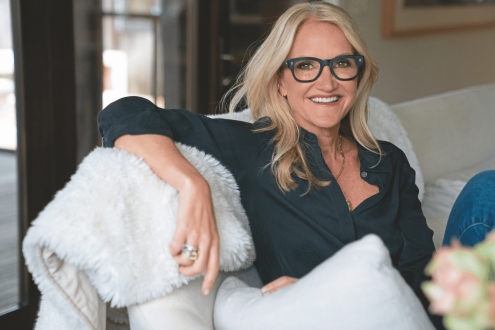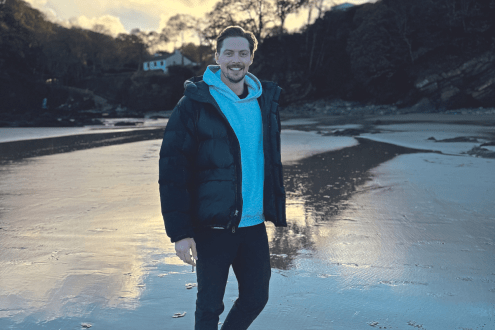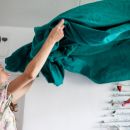‘I have a shopping addiction’: Coach reveals how to get a handle on your spending
Award-winning coach Kim Morgan guides a woman who has backed herself into a corner financially during the loneliness and monotony of lockdown

Session one: ‘Spending gives me a quick fix for isolation and anxiety’
It took time and courage for Shanie* to tell me why she wanted coaching. However, sometimes, there are clues from the outset. Shanie shut down the conversation that I initiated about my fees: ‘It’s no problem. I will pay up front,’ she said hurriedly. Her doorbell rang with deliveries several times during our session. I wondered whether Shanie’s relationship with money had anything to do with her asking for help.
Towards the end of the session, Shanie finally told me why she had sought my guidance. ‘I live on my own and have been on furlough since the beginning of lockdown. I am lonely, bored and anxious about what is going to happen to me.’
I asked Shanie what was causing her the most anguish. My question released a torrent of words and emotions: ‘I’m worried about money. I’m overdrawn and in debt. I probably have a shopping addiction. It’s so easy to just click and buy. I purchase things I don’t need. When the doorbell rang today, I couldn’t even remember what I had ordered,’ she said in despair.
Shanie was clearly distressed and, as we were close to the end of the session, I wanted her to leave feeling that she had made some progress. I thanked her for her honesty and I said I appreciated the courage that it had taken for her to talk about her spending. ‘Often, the first step in making a change is acknowledging your situation and taking a long, hard look at the reality,’ I told Shanie. ‘Congratulations on having done that today. Once you have acknowledged where you are, you can start to think about where you want to be, and what will help you get there.’
It was also important for me to be clear at this stage about the limits of my expertise – that I was not a specialist in debt or addiction counselling and that, as our sessions progressed, I may feel it more appropriate to refer Shanie to more specialised support.

Session two: What’s the pay-off?
Shanie had been thinking about her spending. ‘I shop online to make myself feel better,’ she said. ‘I justify it by telling myself that I’m not paying for travel, lunches, nights out or hair appointments.’
I asked Shanie how she feels when she buys something, and when it arrives. ‘I get a buzz,’ she said. ‘I even like it when the delivery person takes a photo of me! How sad is that?’
‘What do you think your habit is giving you that you don’t have otherwise?’ I asked.
‘Attention, feeling important, excitement, choice and control,’ she replied with surprising insight.
‘How do you feel after the initial rush?’ I pressed. ‘Remorse, shame and worried about debt,’ she admitted.
I asked Shanie to imagine herself in five years’ time if she didn’t stop, and to tell me what she saw. Shanie was upset as she described herself as penniless and jobless. This was a worst-case scenario but to increase motivation to change, it is important to link our behaviour with potential long-term consequences. We continued to work on Shanie’s potential future by imagining the best version of herself in five years’ time and what would get her there. Shanie scribbled copious notes and was deep in thought by the end of our session.
Session three: Who do you aspire to be?
Shanie had drawn the two versions of her future self. ‘I keep them by my desk – the one I want to become and the one I never want to become,’ she announced. ‘If I feel the urge to buy something I do not need, I look at the drawing of the Shanie I never want to be and it stops me from spending!’ ‘Who is the person you want to be?’ I asked. ‘What role does she play in her own life?’
Shanie replied: ‘She has choice and control over her life and she is loved and happy. She gives and gets attention – and not just from the person taking her photograph at the door to prove delivery! The two potential Shanies keep me focused on where I want to go and where I could end up if I don’t change my behaviour.’ ‘Just like that?’ I asked in astonishment. ‘Pretty much – yes! Thank you – that exercise shocked me into seeing the reality of my circumstances. The only thing I have bought since then is a book about managing money!’
Kim adds… Sometimes, a client presents an issue that is close to a coach’s own experience, which is like having a mirror held up to ourselves. Meeting Shanie made me confront the fact that I had also been comfort shopping during lockdown. Shanie never knew this, but her determination and courage inspired me to make changes too.

Coaching exercises
Manage emotional spending
Do you shop online for items that you don’t want or need – things you sometimes don’t even get around to unpacking, wearing or using? Do you forget what you have ordered? Does spending give you an instant high and temporarily alleviate uncomfortable feelings, such as sadness or loneliness? We can all fall into this trap, but if this feels like a problem for you and you would like to manage your comfort spending, try the following approaches:
Treasure map of your life
Divide a sheet of paper into three sections. Imagine it is a treasure map. The left side of the map represents the land you are living in now. The right side of the map represents the land you would like to live in. Between the two lands is a river that you have to cross. Without thinking too hard, draw the land you are living in now. Use symbols, drawings or words to describe your current landscape.
Move over to your ideal landscape – the place you would like to be in. Fill this space with words, symbols and images that represent everything you would like to have in your life.
Look at the gap between the two lands. What is it made of? What is stopping you from getting from where you are to where you want to be? Use words, pictures and symbols to represent the obstacles you have to overcome. Now, draw a bridge that will get you across the gap. What is it made of? Who will help you cross from one land to the other?
When you have finished your map, write down what your first three steps are going to be and when you will take them.
For more, see barefootcoaching.co.uk or follow @BarefootCoaches on Twitter
*Name has been changed.
Join our life leap club. Subscribe now!
Get free coaching from world-renowned psychologists and experts when you subscribe. Click here for more information.
Photographs: Getty Images









